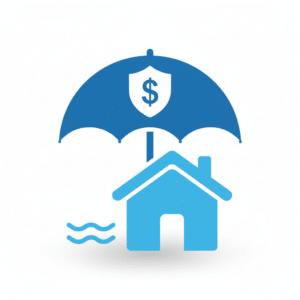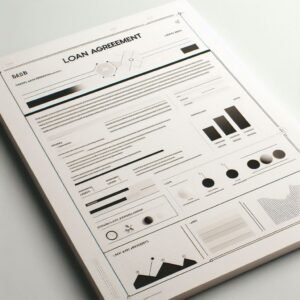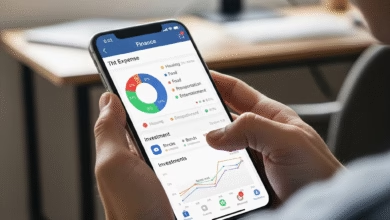How to Use Life Insurance as an Investment (and When Not to)
Understand how to use investment insurance with this guide

In the world of personal finance, you’ll often hear the mantra: “Life insurance is for protection, not investment.” For most people, this is sound advice. The simplest, cheapest policies (known as “Term Life”) do one job: they pay a lump sum to your family if you die.
But what about the other side of the life insurance coin?
You’ve probably heard commercials or seen online ads for policies that “build cash value,” “grow with the market,” or let you “become your own banker.” These are permanent life insurance policies, and they are hybrid products: part death benefit, part long-term, tax-advantaged investment account.
So, can you really use life insurance as an investment? The answer is a complex yes, but…
It is a powerful tool for a very specific type of investor. For the average person, it can be a costly, inefficient, and fee-heavy mistake. This guide will cut through the sales hype and give you the unvarnished truth about how to use life insurance as an investment—and, just as importantly, when you absolutely should not.
The Fundamental Split: Term Life vs. Permanent Life Insurance

Before we talk about “investing,” you must understand the two families of life insurance. Everything flows from this distinction.
What is Term Life Insurance?
Think of Term Life as “renting” your protection.
- How it works: You buy a policy for a specific “term,” usually 10, 20, or 30 years. You pay a low, fixed premium during that time. If you die within the term, your beneficiaries get the full death benefit.
- The Catch: If you outlive the term, the policy expires. You get nothing back. There is no savings account, no cash value, and no investment component.
- The Pro: It is incredibly cheap. A healthy 35-year-old can often get a $1 million, 20-year policy for $50-$70 per month.
- The Verdict: This is pure protection. 99% of people who need life insurance are best served by a term policy.
What is Permanent Life Insurance?
Think of Permanent Life as “owning” your protection.
- How it works: This policy is designed to last your entire life (as long as you pay the premiums).
- The “Investment” Piece: Your premium is split into three parts:
- The Cost of Insurance (COI): The pure cost of the death benefit.
- Fees & Expenses: Administrative charges and agent commissions.
- The Cash Value: The leftover money is deposited into a built-in account that grows over time.
- The Catch: Because it lasts forever and has a cash value component, permanent life insurance is 5x to 15x more expensive than a term policy for the same death benefit.
- The Verdict: This is a hybrid financial product. The “investment” conversation only applies to this category.
How Does Cash Value Life Insurance Actually Work as an Investment?
When you buy a permanent policy, you are building equity (cash value) inside it. This cash value is the centerpiece of the “investment” strategy. Its power comes from three unique tax advantages.
1. Tax-Deferred Growth
Just like a 401(k) or a Traditional IRA, the money inside your cash value account grows without you paying taxes on the gains each year. A $10,000 gain in a brokerage account might trigger a $1,500 tax bill. That same $10,000 gain inside a life insurance policy triggers a $0 tax bill, allowing your money to compound faster.
2. Tax-Free Access (The “Secret Weapon”)
This is the most significant selling point. You can access your cash value without paying taxes, long before retirement age. You don’t do this by withdrawing the money, which can be taxable.
Instead, you take a policy loan.
You are borrowing money from the insurance company and using your cash value as tax-free collateral. Because it’s a loan, it’s not considered “income” by the IRS. You can choose to pay the loan back (with interest) or not. If you don’t pay it back, the loan balance is simply deducted from the death benefit paid to your heirs.
3. A Tax-Free Death Benefit
This is standard for all life insurance, but it’s a key part of the financial picture. The large payout your beneficiaries receive is almost always 100% income-tax-free.
Unpacking the Types of “Investment-Grade” Life Insurance
“Permanent life” isn’t one product. The “investment” part behaves differently depending on the type you buy.
Whole Life (WL): The “Safe & Slow” Option
This is the most traditional version. Think of it as the “bond” or “CD” of the insurance world.
- Investment: The cash value grows at a guaranteed minimum interest rate (e.g., 2-3%). If you buy from a “mutual” company, you may also receive non-guaranteed dividends, which can boost your returns.
- Pros: Extremely stable and predictable. The growth is guaranteed.
- Cons: Very expensive. Returns are low compared to the stock market.
- Best For: Conservative investors who want guaranteed, safe returns and are not concerned with maximizing growth.
Universal Life (UL): The “Flexible” Option
This policy offers more flexibility in your premiums and death benefit.
- Investment: The cash value grows based on current interest rates set by the insurer.
- Pros: You can adjust your premium payments (within limits). If rates are high, your cash value can grow quickly.
- Cons: If interest rates plummet (as they have in recent decades), your cash value growth can stall. If it grows too slowly, your policy could “lapse” if the cash value can’t cover the rising internal cost of insurance.
- Best For: People who need premium flexibility and are comfortable with interest rate risk.
Variable Universal Life (VUL): The “High-Risk, High-Reward” Option
This is the most direct “investment” product.
- Investment: Your cash value is invested in “sub-accounts,” which are essentially mutual funds you choose. You are directly exposed to the stock market.
- Pros: You have the potential for massive market-like returns (e.g., 8-10%+ per year) inside a tax-sheltered vehicle.
- Cons: You have the potential to lose money. If your investments perform poorly, your cash value can shrink, and your policy could lapse, leaving you with nothing. The fees are also typically the highest.
- Best For: Financially sophisticated, high-risk-tolerance investors who have a long time horizon.
Indexed Universal Life (IUL): The “Hybrid” Option
This is a popular but complex modern option that tries to offer the best of both worlds.
- Investment: Your cash value growth is linked to a stock market index (like the S&P 500).
- The “Floor”: It has a 0% floor, meaning you can’t lose money even if the market crashes.
- The “Cap”: It has a “cap rate” (e.g., 8%) or a “participation rate.” If the S&P 500 soars 25%, you might only get the first 8% of that gain.
- Pros: Offers market-linked upside with downside protection.
- Cons: Extremely complex. The “cap” rates can be changed by the insurer and limit your gains in strong bull markets.
- Best For: Investors who want better-than-Whole-Life returns but are terrified of losing principal.
The Pro-Investor Case: When Using Life Insurance as an Investment Is a Smart Move

So, who is this complicated, expensive product actually for? It’s a small but important group of people.
Scenario 1: You Are a High-Income Earner Who Has Maxed Out All Other Tax-Advantaged Accounts
This is the #1 reason. You’re a high-earner. You’ve already contributed the maximum allowed to your 401(k) (e.g., $23,000 in 2024) and your Roth or Traditional IRA (e.g., $7,000 in 2024). You still have money to save and are looking for another “bucket” to grow wealth without a huge annual tax drag.
A permanent life policy has no IRS contribution limits. You can stash $50,000 or $100,000+ per year into a policy if you want, and it will all grow tax-deferred.
Scenario 2: You Want to Build a “Personal Bank” (Infinite Banking Concept)
This is a popular strategy (also called “Bank on Yourself”). The idea is to over-fund a high-cash-value Whole Life policy for years. Then, when you need to make a large purchase—like a car, a business investment, or a down payment—you take a tax-free policy loan instead of a bank loan.
You then “pay yourself back” with interest, recapturing the financing costs and keeping your cash value compounding as if you never touched it. It’s a way to become your own source of financing.
Scenario 3: You Have Complex Estate Planning Needs
This applies to very wealthy individuals whose net worth is above the federal estate tax exemption (currently over $13 million per person).
When they die, their estate will owe a massive federal tax (up to 40%). They can’t pay that bill with stocks or real estate. They need cash. A large, tax-free life insurance death benefit is often purchased for the sole purpose of providing immediate, tax-free liquidity to pay estate taxes and preserve the family’s assets.
Scenario 4: You Are a Business Owner Funding a Buy-Sell Agreement
If you co-own a business, what happens if your partner dies? Their share of the company passes to their spouse, who may know nothing about the business.
To prevent this, partners take out life insurance policies on each other. If one partner dies, the surviving partner uses the tax-free death benefit to “buy out” the deceased partner’s share from their family at a predetermined price. The permanent cash value is just a bonus that builds equity for the business.
The Big “STOP” Sign: When You Absolutely Should NOT Use Life Gnsurance as an Investment
This is the most important section for the average American. For most people, this strategy is a financial trap. Avoid it if…
1. You Have NOT Maxed Out Your 401(k) and IRA
This is the cardinal sin. Never, ever fund a cash value life insurance policy before you’ve maxed out your primary retirement accounts. A 401(k) with an employer match is a 100% risk-free return on your money. A Roth IRA offers completely tax-free growth and withdrawals in retirement. Both have far lower fees than an insurance policy.
2. You Can’t Comfortably Afford the Massive Premiums
Permanent life is expensive. We’re talking hundreds, even thousands, of dollars per month. If you are on a tight budget, you risk “policy lapse.” This happens if you stop paying the premiums. The insurer will drain your cash value to cover the costs, and if it hits zero, the policy is canceled. You lose your coverage, and you may lose all the money you paid in.
3. You Need Liquidity in the First 10-15 Years
The fees and commissions on permanent life are “front-loaded.” This means for the first several years, very little of your premium goes to your cash value.
Most policies have a “surrender charge period” that can last 10, 15, or even 20 years. If you cancel your policy during this time, the insurer keeps a massive chunk of your cash value as a penalty. It’s common for a policy to have a “cash surrender value” of $0 for the first 1-2 years. This is not a liquid investment.
4. You Don’t Understand the (Very High) Fees
The fees inside these policies are notoriously high and complex. You are paying:
- Agent commissions (often 50-100% of your entire first-year premium)
- The rising internal Cost of Insurance (COI)
- Administrative fees and policy charges
- Investment management fees (in a VUL)
- Premium load fees
These fees create a significant “drag” on your returns, often making a simple S&P 500 index fund a far superior long-term investment.
The “Buy Term and Invest the Difference” Argument (A Case Study)

Let’s compare the two strategies for a healthy 35-year-old who needs a $500,000 death benefit.
Strategy A: Whole Life Policy
- Premium: $450/month ($5,400/year)
- After 30 Years (at age 65):
- Death Benefit: $500,000 (guaranteed)
- Guaranteed Cash Value: $220,000
- Projected Cash Value (with non-guaranteed dividends): $350,000
Strategy B: “Buy Term and Invest the Difference” (BTID)
- Premium (for a 30-year Term policy): $40/month ($480/year)
- The “Difference”: $450 – $40 = $410/month to invest
- After 30 Years (at age 65):
- Death Benefit: $0 (the term policy expires)
- Investment Account: That $410/month, invested in a simple S&P 500 index fund and earning an average 8% return, would grow to $557,000.
In this common scenario, the “Buy Term and Invest” strategy creates over $200,000 more wealth. The investor is “self-insured” after age 65 because their investment portfolio is larger than the death benefit they would have had.
Key Questions to Ask an Agent BEFORE You Buy
If you’re a high-income earner and still think this is for you, you must go in armed with the right questions. Do not let an agent gloss over the details.
- “Show me the Policy Illustration. Now, show me the ‘Guaranteed’ column.” Agents love to show illustrations based on projected or non-guaranteed returns. Demand to see the “guaranteed” column—the worst-case scenario. If the policy still looks okay, that’s a good sign.
- “What is the total commission you will make on this policy, and over how many years?” This question will tell you how motivated they are. Be prepared for a non-answer, but asking it shows you’re a serious consumer.
- “What is the surrender charge schedule? In what year will my cash surrender value equal the total premiums I’ve paid in?” This is the “break-even” point. The answer is often 12-18 years.
- “What is the fixed interest rate on a policy loan? Is it a fixed or variable rate?” This is crucial. A low-rate loan (e.g., 4-5%) is valuable. A variable rate that can jump to 8% is not.
- “If I buy this, what are the total fees and charges that come out of my premium and cash value each year?” Make them write it down.
Is Life Insurance a Good Investment?

Let’s be clear: life insurance is not an investment. It is a financial tool that contains an investment-like component.
Life insurance is a bad investment for 90% of Americans.
If you are a middle-class American, you will build wealth far more efficiently and with much lower fees by following this simple plan:
- Buy an affordable 20- or 30-year Term Life policy to protect your family.
- Max out your 401(k) to get the full employer match.
- Max out your Roth IRA.
- If you still have money, go back and max out the rest of your 401(k).
- Invest any remaining funds in a taxable brokerage account in low-cost index funds.
Life insurance is a powerful supplemental tool for 10% of Americans.
If you are a high-income earner, business owner, or have a massive estate, and you have already maxed out every other tax-advantaged account available to you, then a permanent life insurance policy can be a brilliant addition to your portfolio. It offers tax-free growth, tax-free access, and a tax-free legacy that no other single product can match.
Before you sign on the dotted line, be honest about which one of those people you are.





